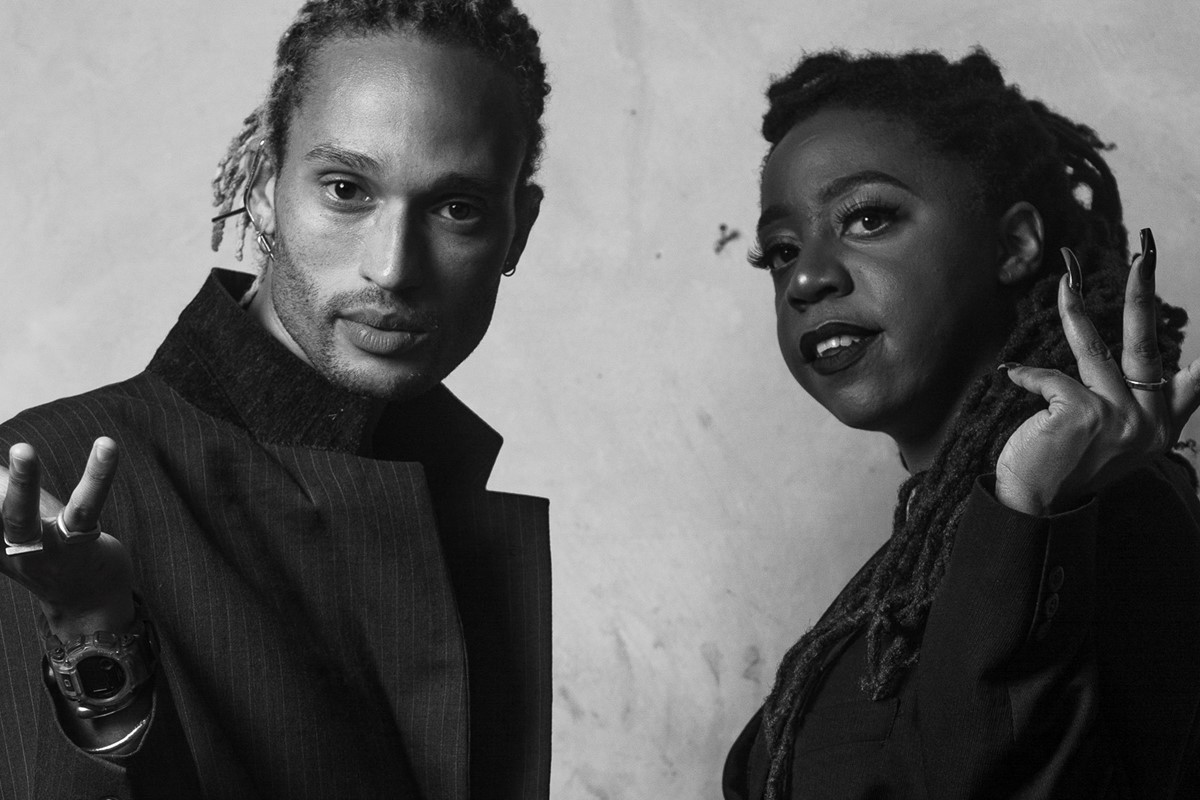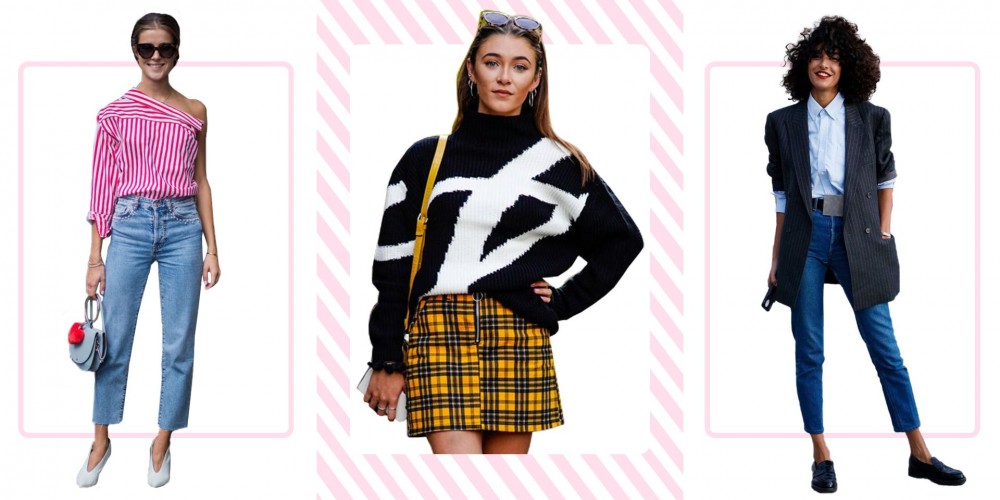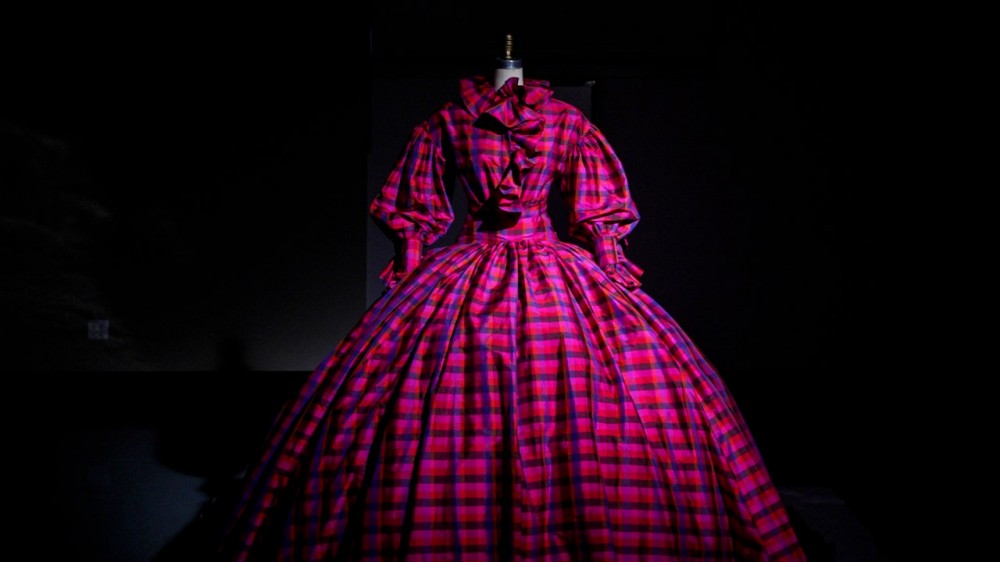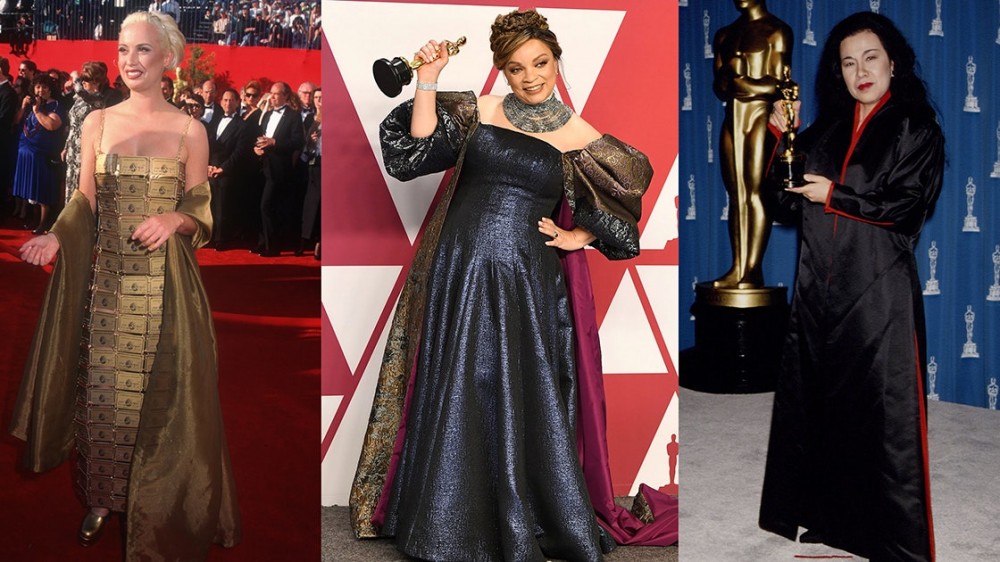
Vintage or Violence: inside Uganda’s secondhand clothing trade
A new podcast asks whether secondhand clothing is the aid it promised to be – or a new frontier of colonialism and control in Africa
In London, black bags stuffed to their limit are a staple outside charity shops, or otherwise spilling from the clothing donation bins that line supermarket car parks. But in Kampala, the capital of Uganda, secondhand clothes are everywhere you turn.
For sale in the streets, markets, and shops, and donned by almost everyone, men weave through traffic on motorbikes wearing fleeces that were once part of American fast food uniforms, while children play on the roadside wearing oversized t-shirts reading ‘Amy’s hen do 2015!!’
But why are people wearing clothes like this in Uganda when the country has been producing its own high-quality cotton for over one hundred years? This is one of the complex questions new six-part podcast Vintage or Violence sets out to answer, asking why the dregs not deemed fit for charity shops in the West are dumped in places like Uganda – and what impact this has on its economy and culture.
Hosted by fashion designer Bobby Kolade and filmmaker Nikissi Serumaga, who are both Ugandan but have also lived in Europe and North America, the show sees the duo interview people who have worked in the industry. With a secondhand clothing importer and the President of the Uganda Textile Society among their guests, Kolade and Serumaga also talk about their own experiences with secondhand clothes and look back at Uganda’s once-booming homegrown textile industry.




In one episode, Kolade remembers seeing a woman selling secondhand clothes on a research trip to cotton fields in Western Uganda. “I thought to myself – what? She’s growing cotton literally behind her, yet she’s selling secondhand children’s clothes on a mat in the sun. That image is a problem.”
This moment is grimly emblematic of the way the multibillion pound secondhand clothing trade, which makes up 81 per cent of all clothing purchases in the country, has crushed the local textile industry. With youth unemployment as high as as high as 70 per cent, and any attempts by the country to curb the import and redistribution of pre-owned garments hampered by countries like the US, the podcast uses the lens of secondhand clothing in Uganda to explore global economic inequalities.
From cotton production in Uganda under colonialism, to the economic liberalisation in the 90s that created space for the secondhand clothing industry to shift from charity to business, textiles have long been linked to the country’s economic independence. Beyond delving into these topics, the hosts also reimagine the future of Uganda’s textile industry, and what this could mean for the future of the country as a whole.
As the final episode of the series lands, we meet Vintage or Violence’s hosts to hear more about the project.
Bobby and Nikissi, hi! How did you get interested in this topic?
Bobby Kolade: I moved back to Kampala with this industrial sort of mindset. I came in thinking: I’ve already lost one company in Berlin, where I was dealing with a very niche luxury market and where I didn’t pay attention to production costs and pricing, so let me do something for people like myself who just need really cool cotton apparel – using Ugandan cotton. But the experiences I had researching the topic, and working in the industry here, made me furious.
What made you the most furious?
Bobby Kolade: That we know what we once had. And we know what the potential is, and it’s right in front of us. The cotton is there, the climate is optimal for this industry. We used to be one of the highest producers of cotton in Sub-Saharan Africa and we used to have a textile industry here. But we lost it all. So there’s a strong sense of nostalgia and of bitterness, of sadness.
What lessons did you learn working in the Ugandan textile industry?
Bobby Kolade: We don’t have the capacity to produce a diverse product range. We’re very limited in terms of our textile production in the country, as well as lacking in buying power. And although we do produce high-quality cotton, it makes more sense financially to export it. Meanwhile the price of local production is never, ever going to be able to compete against the price of secondhand clothes. It would be very difficult to create a full streetwear brand.
In the episode GOOD OLD DAYS the nostalgia is real. Why were things so much better for the industry in that post-independence era?
Nikissi Serumaga: When I told my mum about the documentary I was working on with Bobby, she said ‘well, we already had this stuff’. Her school uniform was made from Ugandan cotton. So this started to make me think about the industries that we had violently inherited from colonialism, but we had inherited nonetheless – and they were functioning. Maybe then Uganda was still at the point where we were benefiting from systems that were made to cater for a small number of people – but that ultimately couldn’t extend themselves to the rest of us.
Bobby Kolade: There are narratives we as Ugandans know well, like when Idi Amin expelled Asian people from the country in the 1970s. But nobody understands the result of that was the downfall of industry because the Asians were in charge of the factories, and they had the managerial positions that they inherited from the British. So here we are in a country with infrastructure, but no knowledge of how to run it.
You say in the podcast how Uganda shouldn’t ‘copy and paste’ the textile industries in other parts of the world, and that things should be done the Ugandan way. What do you think that looks like?
Bobby Kolade: The first thing is to learn from what’s already working within our country. If places like Owino market – the source of all secondhand clothing in this country – are working, let’s understand how the systems they use work. It’s a big open space with a lot of communication, and everything is used – the very last bit of fabric that they cut off a garment is used to stuff pillows or sofa cushions.
Also we have different ethnic groups and different centres around the country. What if each of these areas had a smaller factory specialised in one form of production? That way we’re not replicating these massive factories in Asia where people are doing thankless work, and the same thing all day every day. We don’t want that situation, because that’s an exploitation of human rights.
Nikissi Serumaga: Seeing the lines and lines of people sewing and steaming clothes in Owino market, it’s like, ‘Okay, we do know how to congregate and produce. How can we direct this energy in such a way that honours the space?’ Dead White Man’s Clothes are also doing some really interesting work in Ghana based around one of the central markets there, and really also questioning what a factory can look like.
That’s interesting about Ghana. I also heard that Rwanda banned secondhand clothing.
Nikissi Serumaga: Yes, Rwanda was the only EAC (East African Community) country to successfully ban secondhand clothing imports. But when we tried to ban secondhand clothes, along with the rest of the EAC, the US told us that we couldn’t. And they threatened really big sanctions. It’s interesting to me how scared they got at the idea of us rejecting their secondhand clothes.
“Rwanda was the only EAC (East African Community) country to successfully ban secondhand clothing imports. But when we tried to ban secondhand clothes, along with the rest of the EAC, the US told us that we couldn’t. And they threatened really big sanctions“ – Nikissi Serumaga
Who benefits from this secondhand clothing trade – in Africa and globally?
Nikissi Serumaga: Maybe the more important question is, who has the power to decide? Does Uganda get to decide whether we want to bring in secondhand clothes, or is it America? Does the vendor at the market get to decide how they’re working, and the conditions that they’re working under? As a consumer, am I in a position to be able to earn enough money to choose between locally made new Ugandan products, or secondhand clothing?
Do you think it is impossible for the local textile industry to grow while the secondhand clothing trade continues?
Bobby Kolade: I’m afraid to say yes. If it continues at an unregulated pace, it’s not possible. I hate to say this, but it’s a fantastic system. It’s so well thought out and so exploitative. We couldn’t ban everything at once.
What about new clothes imported from countries like China?
Bobby Kolade: Those are even worse, because the quality is often deplorable, right? Most Ugandans would rather buy secondhand clothes from the globe than brand new clothes from China. In the podcast we hear how some vendors will even sand down the soul of a shoe to make it look worn! That’s how far we’ve gone.
I also don’t feel like the clothes are made for us. There is no cultural value in seeing young, sexy, passionate, fashion lovers in Uganda walking around in fake Supreme.
What do you mean by cultural value?
Bobby Kolade: When I buy something from a designer at a shop, I like knowing that this person has somehow thought of me or my community. Are the sizes right? Have they thought about a Ugandan who lives in the central region? Have they thought about material? Have they thought about colour? Are we being considered at all?
I don’t like seeing Ugandans wear t-shirts with German sayings on them – that has no culture. I want to see t-shirts that have local languages on them, and local art. That has cultural value. But bringing in a t-shirt with the false label of cotton on it from Southeast Asia and selling it to Africans as brand new is criminal.
It’s a crime against fashion!
Bobby Kolade: It’s a crime against fashion, baby! And it’s a crime against humanity, and it’s a crime against the environment.
What happens when people in the West donate clothes to charity?
Bobby Kolade: So some of those metal clothing bins belong to charities, which choose the best items to sell them in their own shops in the Global North. Others actually belong to private companies, which pay a fee to charities to use their logo on the bin so that people think that they’re donating to a good cause.
The garments that are not acceptable for richer countries are then sent either directly to poorer countries or to sorting centres. Classically speaking, the lowest quality pieces are sent to Sub-Saharan Africa, where they are imported and distributed to shop owners. It’s quite a journey.
Would you advise people in the West to stop donating their clothes to charity?
Bobby Kolade: Nikissi and myself have both been in this position where we’ve got rid of old clothes by donating to collections. Nikissi in Toronto, myself in Berlin. It’s really convenient, right?
First of all, people need to stop shopping. And I don’t mean this in a Vivienne Westwood way, but can we calm the fuck down? We really just need to stop consuming as much as we are now. Secondly, people can really look into the charities that they’re donating their clothes to and who’s running them.
Nikissi Serumaga: We’re very far removed from the people who do have the power to make the decisions. But the European or North American shopping experience is not where clothing starts and ends. So really take the time to think about yourself as part of a much larger cycle, rather than just someone with a very cute pair of trousers.
“When I buy something from a designer at a shop, I like knowing that this person has somehow thought of me or my community. Are the sizes right? Have they thought about a Ugandan who lives in the central region? Have they thought about material? Have they thought about colour? Are we being considered at all?“ – Bobby Kolade
The last episode of Vintage or Violence is coming out on Friday. What have you got in store for us after that?
Bobby Kolade: I’m working on a new project that is a response to the textile industry in Uganda and the global secondhand clothing industry. That’s all I’m going to say for now without spoiling too much, but I’m reacting to the issue as a design project. I am still a fashion designer, and I will continue to work in the industry.
Nikissi Serumaga: Actually, if the Global North wants to help they can send us money to finish our documentary! It’s a feature-length film still in production, which started two years ago with us following Bobby in his efforts to look at Ugandan textiles, and to be able to create in this space. As a filmmaker, I also really want to go deeper and look at what it means to create in a space that is essentially a failed state. How do we get to manifest these dreams in a very vulnerable space and position?



